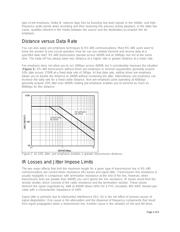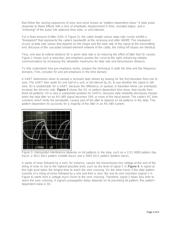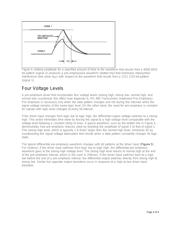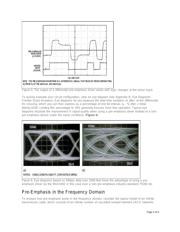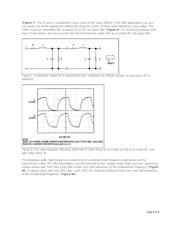herunterladen

Maxim > Design Support > Technical Documents > Application Notes > Interface Circuits > APP 643
Keywords: RS-485,rs485, EIA/TIA-485, data transceiver, pre-emphasis, pre-equalization, equalization
APPLICATION NOTE 643
Pre-Emphasis Improves RS-485 Communications
Jan 22, 2001
Abstract: Intersymbol interference in RS-485 data transmission systems is discussed, with emphasis on
improving transmission data rates or line lengths. RS-485 transceivers having internal driver pre-
emphasis and corresponding receiver de-emphasis are shown to permit doubling of the data-cable
length at data rates over 400kbps. Conversely, data rates may be doubled for any given transmission
line length. Signal analysis in both time and frequency domains are employed to explain the
improvement.
Intersymbol interference places the main limitation on the maximum allowable distance for RS-485
communications, but pre-emphasis is extremely effective in reducing this interference.
Signal-transmission systems contend with two major obstacles: losses that reduce the signal amplitude
and energy storage that alters the signal's shape. A signal-transmission system is the electrical channel
between an information source and its destination (Figure 1). You can define pre-emphasis as any
change that you make at the source, before the electrical channel, that improves signal quality at the
destination. Whatever else you call pre-emphasis (precompensation, pre-equalization, predistortion, or
accentuation), the technique reduces noise and distortion by increasing the magnitude of some
frequency components. To restore the signal and improve the SNR, a system usually follows pre-
emphasis by its converse: de-emphasis.
Figure 1. A signal-transmission system includes the electrical channel between the information source
and its destination.
Many applications use pre-emphasis techniques. In IC-layout programs, for instance, pre-emphasis
adjusts the line widths to compensate for etch-rate variations that occur around corners. In disk-drive
controllers, pre-emphasis compensates for poor frequency response near the center of the disk. Another
Page 1 of 9



